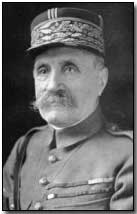Feature Articles - The Armistice
 The term
"armistice" means a cessation of hostilities as a prelude to peace
negotiations. In the context of the First World War 'the armistice' is
generally referred to in context of the agreement between the Germans and
the Allies to end the war on
November
11, 1918.
The term
"armistice" means a cessation of hostilities as a prelude to peace
negotiations. In the context of the First World War 'the armistice' is
generally referred to in context of the agreement between the Germans and
the Allies to end the war on
November
11, 1918.
However it was by no means the only armistice of the war. The battle on the Eastern Front was brought to a close in December 1917 (and followed by the Treaty of Brest-Litovsk), as was Romania's war (resulting in the Treaty of Bucharest).
Germany may have agreed an armistice on November 11, but Bulgaria called it quits on 30 September of the same year, 1918. Turkey and Austria-Hungary - the latter having essentially sparked the war in the first place - concluded an armistice within days of each other, on 30 October and 3 November 1918; both were exhausted and could no longer continue to prosecute the war.
However the most significant armistice was signed at 5 a.m. on the morning of 11 November 1918, and came into effect six hours later at 11 a.m. (hence the oft-quoted 'eleventh hour of the eleventh day of the eleventh month'). Click here for a transcript of the armistice terms.
 Initiating
the armistice negotiations on 4 October 1918, the Germans
directed peace
feelers towards the U.S. government led by
President
Wilson. The Germans were keen to conclude a peace based upon
Wilson's famous
Fourteen Points.
Initiating
the armistice negotiations on 4 October 1918, the Germans
directed peace
feelers towards the U.S. government led by
President
Wilson. The Germans were keen to conclude a peace based upon
Wilson's famous
Fourteen Points.
Wilson was naturally willing to conclude a peace based upon his doctrine for future peace and stability; however his allies, never particularly keen on the Fourteen Points, raised immediate objections. Britain, led by Lloyd George, opposed a ban on a policy of blockades; France was intent on imposing swingeing reparations upon the 'beaten' foe.
Wilson compromised by accepting both objections whilst threatening to negotiate a separate peace on behalf of the U.S. if Britain and France continued with their objections. His ploy successful, details of a proposed settlement were sent to Germany on 5 November by the Supreme War Council.
A major potential stumbling block to peace was Wilson's insistence upon the abdication of the German Kaiser, Wilhelm II. This was overcome by German Chancellor Max von Baden's exasperated decision to announce the reluctant Wilhelm's abdication to the public on 9 November 1918 (subsequently made official by the Kaiser's abdication proclamation on 28 November).
On 8 November a German delegation met with Allied Supreme Commander Ferdinand Foch - who was to lead the military negotiations - in the forest of Compiegne, some 65 km north-east of Paris.
 The
armistice was formally signed in Foch's railway carriage on 11 November (in 1940
Hitler exacted revenge by forcing the French to sign an
armistice - on German terms - in the same railway carriage).
The
armistice was formally signed in Foch's railway carriage on 11 November (in 1940
Hitler exacted revenge by forcing the French to sign an
armistice - on German terms - in the same railway carriage).
The armistice initially ran for 30 days but was regularly renewed until the formal peace treaty was signed at Versailles the following year. Should the Germans have deviated in any way from the terms of the armistice the Allies warned that a resumption of hostilities would begin within 48 hours.
The terms of the armistice required the Germans to evacuate German-occupied territories on the Western Front within two weeks. Allied forces were to occupy the left bank of the Rhine within a month, and a neutral zone established on the right bank.
Notably, all German-occupied territories elsewhere were to be abandoned; and the treaties already negotiated with Russia and Romania were officially annulled (the Russian peace treaty in particular had been denounced by Trotsky as annexationist in character).
In terms of military equipment, under the terms of the armistice the Germans lost 5,000 artillery pieces, 30,000 machine guns, 3,000 minenwerfer, 2,000 aircraft, 5,000 locomotives, 150,000 railway wagons, 5,000 trucks and its entire submarine fleet. The majority of Germany's surface naval fleet were interned; the remainder were disbanded.
The terms of the armistice were inevitably seen as punitive within Germany. The country however was in no condition to resume hostilities and so reluctantly accepted the conditions. The French nevertheless viewed the terms of the armistice - and the Versailles peace treaty that followed in 1919 - as overly lenient, indicating the widely contrasting views of both the armistice and the subsequent treaty.
(Click here to read British General Sir Frederick Maurice's account of the Allied reasons for accepting peace in November 1918 rather than pursing the German Army into Germany.)
Shortly after the armistice was agreed President Wilson announced details to Congress, and further celebrated the agreement in a Thanksgiving Address at the close of the month.
Click here to view a map detailing the final Allied offensive of the war.
The USA suffered 57,476 fatal army casualties during the war.
- Did you know?
